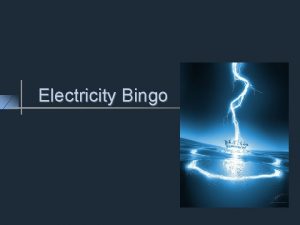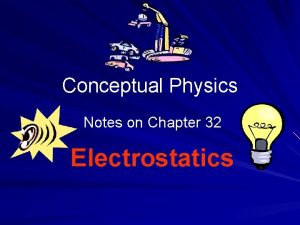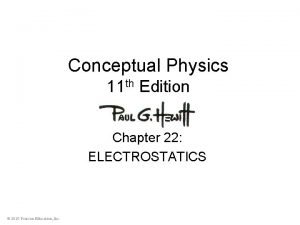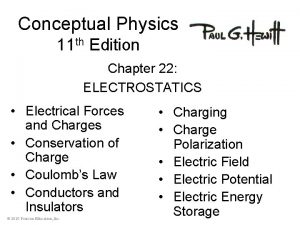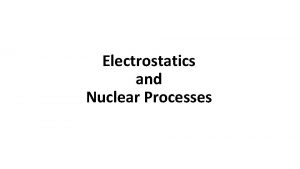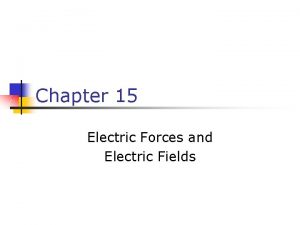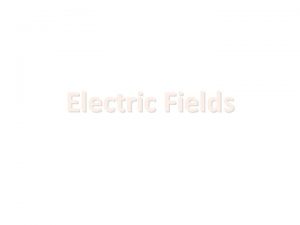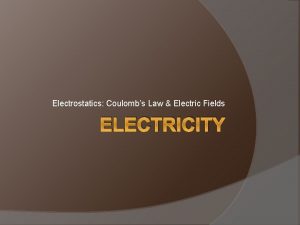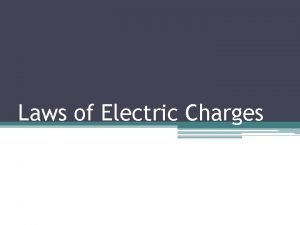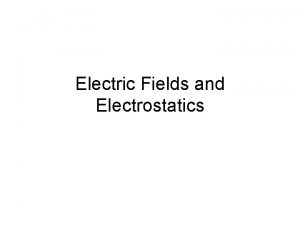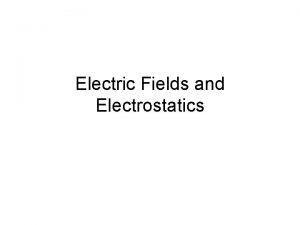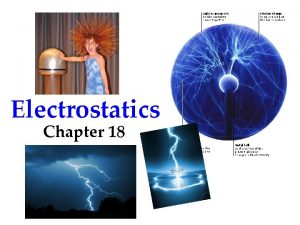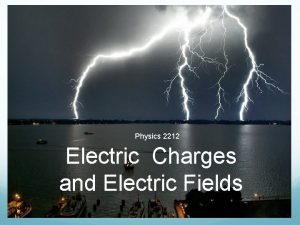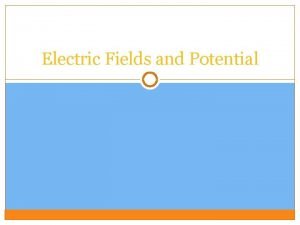ELECTRIC CHARGES AND FIELDS CLASSXII PHYSICS ELECTROSTATICS Electrostatics












- Slides: 12

ELECTRIC CHARGES AND FIELDS CLASS-XII PHYSICS

ELECTROSTATICS • Electrostatics deals with the study of forces, fields and potentials arising from static charges. • Electric charges are of two types • Positive Charge • Negative Charge • Like charges repel each other • Unlike charges attract each other

ELECTROSTATICS • By convention, the charge of electron is considered as negative and charge of proton is considered as positive • The substances which allow electricity to pass through them are called conductors • The substances which do not allow electricity to pass through them are called insulators

ELECTROSTATICS • Electric charge is a basic property of matter • Basic Properties of Electric Charge • Additivity of charges- If a system contains two point charges q 1 and q 2, the total charge of the system is obtained simply by adding algebraically q 1 and q 2 • Charge is conserved- For an isolated system, the net charge of the system remains constant • Quantisation of charge- The fact that electric charge is always an integral multiple of e is termed as quantisation of charge

Coulomb’s Law • Coulomb found that the electric force between two charged objects is • Proportional to the product of the charges on the objects, and • Inversely proportional to the separation of the objects squared • F = kq 1 q 2/r 2 • k being a proportionality constant, having a value of 8. 988 x 109 Nm 2/c 2

Electric Force • As with all forces, the electric force is a Vector • The direction of the force is either parallel or antiparallel to the unit vector depending upon the relative signs of the charges

Superposition of Forces • If there are more than two charged objects interacting with each other • The net force on any one of the charged objects is the vector sum of the individual Coulomb forces on that charged object • This is called superposition principle

Electric Field • The Electric Force is like the Gravitational Force • The electric force can be thought of as being mediated by an electric field. • A Field is something that can be defined anywhere in space

Electric Field • We say that when a charged object is put at a point in space, • The charged object sets up an Electric Field throughout the space surrounding the charged object • It is this field that then exerts a force on another charged object

Electric Field Lines • An imaginary line that at any given point has its tangent being in the direction of the electric field at that point • At any given point, there can be only one field line • The electric field has a unique direction at any given point • Electric Field Lines • Begin on Positive Charges • End on Negative Charges

Electric Field Lines

Electric Dipole • An electric dipole is a pair of point charges having equal magnitude but opposite sign that are separated by a distance d.
 Electric charges and electric forces lesson outline
Electric charges and electric forces lesson outline Like charges blank and opposite charges blank
Like charges blank and opposite charges blank Red fields to green fields
Red fields to green fields Electric forces and fields concept review
Electric forces and fields concept review Chapter 16: electric forces and fields answers
Chapter 16: electric forces and fields answers Conceptual physics chapter 33
Conceptual physics chapter 33 Electric currents and magnetic fields
Electric currents and magnetic fields Electric currents and magnetic fields
Electric currents and magnetic fields Conceptual physics electrostatics
Conceptual physics electrostatics Conceptual physics electrostatics
Conceptual physics electrostatics Conceptual physics chapter 22 electrostatics
Conceptual physics chapter 22 electrostatics Electrostatics physics classroom
Electrostatics physics classroom Electric fields quiz
Electric fields quiz

